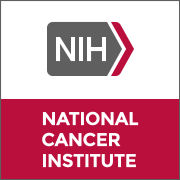2
项与 Anti-thyroglobulin mTCR-transduced Autologous Peripheral Blood Lymphocytes(NCI) 相关的临床试验Pilot Study of Adoptive Cell Transfer for the Treatment of Metastatic Cancer That Expresses NY-ESO-1 Using Lymphodepleting Conditioning Followed by Infusion of Anti-NY ESO-1 Murine TCR-Gene Engineered Lymphocytes
This pilot clinical trial studies the side effects of anti-ESO (cancer/test antigen) murine T-cell receptor (mTCR)-transduced autologous peripheral blood lymphocytes and combination chemotherapy with cyclophosphamide and fludarabine phosphate in treating patients with cancer that has spread to other places in the body (metastatic) and expresses the gene NY-ESO-1. Donor white blood cells that are treated in the laboratory with anti-cluster of differentiation (CD)3 may help treat metastatic cancer. Drugs used in chemotherapy, such as cyclophosphamide and fludarabine phosphate, work in different ways to stop the growth of cancer cells, either by killing the cells, by stopping them from dividing, or by stopping them from spreading. Giving more than one drug (combination chemotherapy) may kill more cancer cells. Aldesleukin may stimulate white blood cells, including natural killer cells, to kill metastatic cancer cells. Giving anti-ESO (cancer/test antigen) mTCR-transduced autologous peripheral blood lymphocytes together with combination chemotherapy and aldesleukin may kill more cancer cells.
Phase I/II Study Administering Peripheral Blood Lymphocytes Transduced With a Murine T-Cell Receptor Recognizing Human Thyroglobulin to Patients With Thyroglobulin Expressing Thyroid Cancer
Background
The NCI Surgery Branch has developed an experimental therapy for treating patient with metastatic thyroid cancer that involves taking white blood cells from the patient, growing them in the laboratory in large numbers, genetically modifying these specific cells with a type of virus (retrovirus) to attack only the tumor cells, and then giving the cells back to the patient. This type of therapy is called gene transfer. In this protocol, we are modifying the patient s white blood cells with a retrovirus that has the gene for anti-thyroglobulin incorporated in the retrovirus.
Objectives:
The purpose of this study is to see if these tumor fighting cells (genetically modified cells) that express the receptor for the thyroglobulin molecule on their surface can cause thyroid tumors to shrink and to see if this treatment is safe.
Eligibility:
Adults 18 and older with thyroid cancer that has the thyroglobulin molecule on tumor surfaces
Design:
Work up stage: Patients will be seen as an outpatient at the NIH clinical Center and undergo a history and physical examination, scans, x-rays, lab tests, and other tests as needed
Leukapheresis: If the patients meet all of the requirements for the study they will undergo leukapheresis to obtain white blood cells to make the anti- thyroglobulin cells. {Leukapheresis is a common procedure, which removes only the white blood cells from the patient.}
Treatment: Once their cells have grown, the patients will be admitted to the hospital for the conditioning chemotherapy, the anti-thyroglobulin cells and aldesleukin. They will stay in the hospital for about 4 weeks for the treatment.
Follow up:
Patients will return to the clinic for a physical exam, review of side effects, lab tests, and scans about every 1-3 months for the first year, and then every 6 months to 1 year as long as their tumors are shrinking. Follow up visits take up to 2 days.
100 项与 Anti-thyroglobulin mTCR-transduced Autologous Peripheral Blood Lymphocytes(NCI) 相关的临床结果
100 项与 Anti-thyroglobulin mTCR-transduced Autologous Peripheral Blood Lymphocytes(NCI) 相关的转化医学
100 项与 Anti-thyroglobulin mTCR-transduced Autologous Peripheral Blood Lymphocytes(NCI) 相关的专利(医药)
100 项与 Anti-thyroglobulin mTCR-transduced Autologous Peripheral Blood Lymphocytes(NCI) 相关的药物交易







